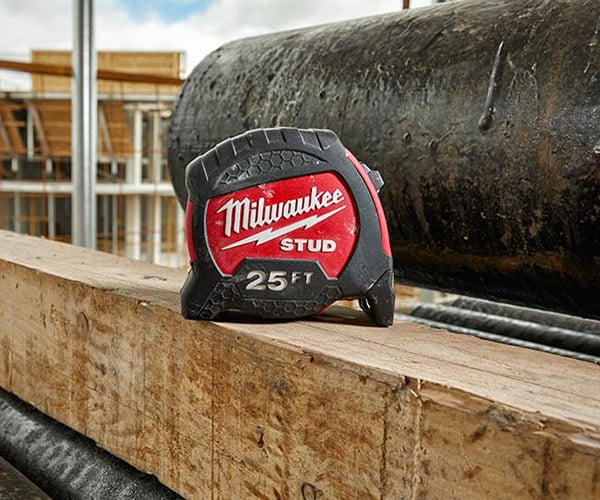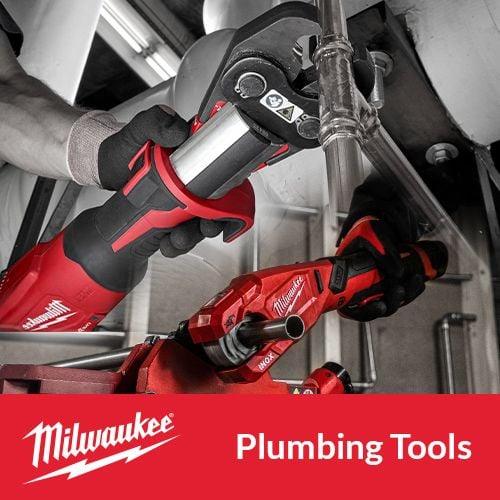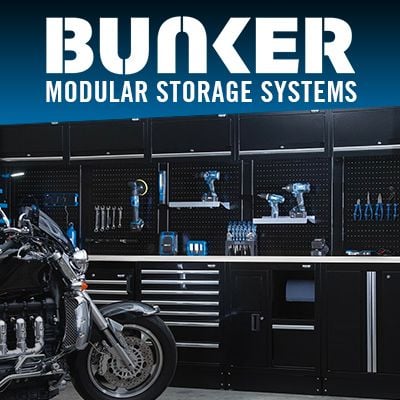Access panels play a crucial role in modern buildings, providing easy and convenient access to various systems and components. Whether it's for maintenance, repairs, or inspections, access panels have become an essential feature for building owners and facilities managers. In this article, we will explore the different aspects of access panels, including their definition, types, importance in building design, key benefits, factors to consider when choosing them, and installation and maintenance tips.
Defining Access Panels
Access panels, also known as access doors, are specially designed openings in walls, ceilings, or floors that allow access to concealed spaces. These panels are typically hinged or removable, providing a secure yet easily accessible entry point to mechanical, electrical, plumbing, and HVAC systems.
Access panels play a crucial role in the maintenance and inspection of buildings. They offer a practical solution for accessing vital components that are hidden behind walls, ceilings, or floors. Without access panels, technicians and maintenance personnel would face significant challenges when it comes to servicing and repairing various systems within a building.
The Basic Concept of Access Panels
The basic concept of access panels revolves around the need for easy and convenient access to interior building components. They are strategically placed in areas that require routine maintenance or periodic inspections, ensuring that building systems remain functional and efficient.
Imagine a scenario where a building's electrical system encounters a fault. Without an access panel, electricians would have to break through walls or ceilings to reach the problem area. This not only causes unnecessary damage but also leads to increased repair costs and prolonged downtime. Access panels eliminate these issues by providing a designated entry point, allowing technicians to quickly and efficiently address any issues that may arise.
Different Types of Access Panels
Access panels come in various types to cater to different building requirements. Some common types include ceiling access panels, wall access panels, floor access panels, and fire-rated access panels. Each type is designed to provide specific functionalities and meet specific building codes and standards.
Ceiling access panels are typically used in commercial buildings and provide access to overhead systems such as HVAC ducts, electrical wiring, and plumbing. These panels are often discreetly integrated into the ceiling design, maintaining the aesthetic appeal of the space while allowing for easy access when needed.
Wall access panels, on the other hand, are commonly found in residential and commercial buildings. They provide access to concealed plumbing, electrical, and communication systems that run behind walls. These panels are designed to seamlessly blend with the wall surface, ensuring a cohesive look while providing a practical solution for maintenance and repairs.
Floor access panels are commonly used in areas where there is a need to access underfloor systems, such as in commercial buildings with raised flooring or in industrial settings where utilities are routed beneath the floor. These panels are sturdy and durable, capable of withstanding heavy loads while providing convenient access to critical systems.
Fire-rated access panels are specifically designed to meet fire safety regulations. They are constructed with fire-resistant materials and are used in areas where fire-rated barriers are required. These panels ensure that access points do not compromise the integrity of fire-rated walls or ceilings, providing both accessibility and safety.
It is important to choose the appropriate type of access panel based on the specific needs of a building. Factors such as accessibility requirements, building codes, and fire safety regulations should be taken into consideration to ensure the optimal functionality and compliance of the access panels.
The Importance of Access Panels in Building Design
Access panels serve several important purposes in building design, beyond just the practicality of easy access. Let's explore two key benefits:
Enhancing Architectural Aesthetics
Access panels can be seamlessly integrated into the overall design of a building, ensuring that they blend harmoniously with the surrounding architectural elements. By using materials, finishes, and designs that match the existing aesthetics, access panels can be both functional and visually appealing.
For example, in a modern office building with a sleek and minimalist design, access panels can be made with clean lines and a minimalist aesthetic. They can be made from materials such as glass or stainless steel, which not only provide durability but also add a touch of elegance to the overall design. These panels can be strategically placed in areas where they are less noticeable, such as behind decorative wall panels or in inconspicuous corners, to maintain the building's aesthetic appeal.
Furthermore, access panels can also be customized to match specific architectural styles. In a historical building with intricate details and ornate designs, access panels can be crafted to mimic the existing architectural elements, such as using decorative moldings or patterns that complement the overall design. This attention to detail ensures that the access panels seamlessly blend into the building's aesthetics, enhancing its overall visual appeal.
Facilitating Easy Maintenance
Access panels greatly simplify the maintenance process by providing a convenient point of entry to building systems. This eliminates the need for extensive dismantling or disruption of other components. With easy access, maintenance and repair work becomes faster, more efficient, and less disruptive to building occupants.
Imagine a scenario where a plumbing issue arises in a commercial building. Without access panels, plumbers would have to tear down walls or ceilings to reach the problem area, causing significant disruption to the occupants and potentially damaging the building's structure. However, with well-placed access panels, plumbers can easily access the plumbing system without causing unnecessary damage. This not only saves time and money but also minimizes the inconvenience to building occupants.
In addition, access panels can also be designed with features that further facilitate maintenance. For example, some access panels have built-in hinges or locks, allowing them to be easily opened and closed for routine inspections or repairs. Others may have insulation or soundproofing properties, ensuring that the surrounding areas are not affected by noise or temperature fluctuations during maintenance activities. These thoughtful design elements make maintenance tasks more efficient and effective, ultimately prolonging the lifespan of the building systems.
In conclusion, access panels play a crucial role in building design by enhancing architectural aesthetics and facilitating easy maintenance. By seamlessly integrating into the overall design and providing convenient access to building systems, access panels contribute to the functionality, efficiency, and longevity of a building.
Key Benefits of Access Panels
Access panels offer a wide range of benefits for building owners, facilities managers, and maintenance teams. Let's explore three key benefits:
Improved Safety Measures
Access panels allow easy access to critical building systems, ensuring that necessary maintenance checks and safety measures can be implemented promptly. Regular inspections and quick repairs can help prevent potential hazards and ensure the safety of the building and its occupants.
Increased Building Efficiency
By providing quick and convenient access to building systems, access panels facilitate regular maintenance, allowing them to function optimally. Properly maintained systems, such as HVAC and plumbing, result in improved energy efficiency, reduced utility costs, and enhanced overall building performance.
Cost-Effective Solution for Maintenance
Access panels enable efficient maintenance practices, which can reduce the overall cost of building maintenance. With easy access to components, maintenance tasks can be performed more quickly and with minimal disruption, resulting in cost savings in terms of labor, time, and materials.
Choosing the Right Access Panels
Choosing the right access panels is crucial to ensure they meet the specific needs of the building and its occupants. Consider the following factors when selecting access panels:
Factors to Consider
Factors such as the location, purpose, and frequency of access should be taken into account when choosing access panels. Additionally, compliance with building codes, fire ratings, and security requirements should also be considered.
Material and Size Selection
Access panels are available in different materials, including steel, aluminum, and plastic. Each material has its own advantages, such as durability, fire resistance, or lightweight construction. The size of the access panel should also be carefully selected to ensure it fits the intended opening and provides sufficient access.
Installation of Access Panels
The installation of access panels can be done either professionally or as a do-it-yourself (DIY) project. Let's explore both options:
Professional Installation vs DIY
For complex installations or when compliance with building standards is crucial, it is recommended to hire professionals to install access panels. Professionals have the necessary expertise and experience to ensure proper installation, adherence to safety regulations, and seamless integration with the building structure.
However, for simple installations or when a DIY approach is preferred, manufacturers provide detailed installation instructions that should be closely followed. DIY installations require careful planning, precise measurements, and proper tools to ensure a secure and functional installation.
Maintenance Tips for Access Panels
Regular maintenance of access panels is essential for their long-term functionality and performance. Here are some maintenance tips to keep in mind:
1. Inspect access panels periodically to ensure they are in good condition, free from damage, and functioning properly.
2. Keep access panels clean and free from debris or obstructions that may hinder their functionality.
3. Lubricate hinges or moving parts regularly to ensure smooth operation.
4. Check for any signs of wear or damage and promptly address repairs or replacements as needed.
5. Follow the manufacturer's recommendations for maintenance and adhere to any warranty requirements.
Understanding the benefits of access panels and their role in building design is essential for anyone involved in the construction, maintenance, or management of buildings. By providing easy and convenient access to critical systems, access panels contribute to improved safety, increased efficiency, and cost-effective maintenance practices. Proper selection, installation, and maintenance of access panels ensure their long-term functionality and overall building performance.














